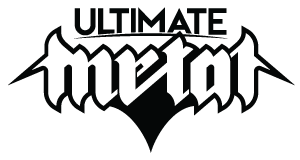This headline is (half) false
[font=verdana,geneva,arial,sans serif][size=-2]
Oct 2nd 2003
From The Economist print edition
[/font]
[font=verdana,geneva,arial,sans serif][size=-1]A new way to analyse self-referential and contradictory sentences[/size][/font]
[size=-1]EPIMENIDES the Cretan, a philosopher of the 6th century [size=-1]BC[/size], is said to have uttered the sentence, All Cretans are liars. As he himself was a Cretan, this gave rise to a paradoxif he were telling the truth, then he would be a liar. Depending on how one defines a liar, the paradox is resolvable; he could have been a habitual liar who was telling the truth in this one instance. However, a stronger version of the paradox, known as the Liar paradoxthis sentence is falseis not resolvable in conventional logic systems.[/size]
[size=-1]Indeed, the circular loop that the sentence inducesif it is false, it must be true, and if true, falsehas been used more than once in science-fiction movies to cause marauding computers to lose their sanity and explode. But in a new paper, Kostis Vezerides of the American College of Thessaloniki, and Athanasios Kehagias of the Aristotle University of Thessaloniki, in Greece, show that, in almost all cases, paradoxes such as the Liar are resolvable with the use of fuzzy logic.[/size]
[size=-1]Traditionally, logicians have made a stark distinction between truthhood and falsity. A statement was considered to be either true (given a truth value of one) or false (a value of zero). In the 1960s, Lotfi Zadeh of the University of California at Berkeley came up with the catchy innovation of fuzzy logic. In this system, things could be sort-of true, or only partially false. A truth value of 0.5 meant that a statement was half-true, and so forth.[/size]
[size=-1]In 1979, Dr Zadeh was the first to apply fuzzy logic to self-referential sentences, which can give rise to paradoxes like the ones above. (Not all self-referential sentences are paradoxicalconsider this sentence is true.) He reasoned that the Liar sentence is exactly half-true. But more complicated self-referential paradoxes are trickier to resolve. One example is the inconsistent dualist, which can be thought of as a pair of brothers, one of whom asserts the other is lying, while the other says his brother is telling the truth.[/size]
[size=-1]Earlier work had shown how assigning fuzzy values to self-referential sentences could give rise to mathematical chaos. This is because the systems of equations that must be solved to determine the truth-values are often non-linearso attempts to find a solution can rarely be found in the general case, but must be found numerically, closing in on the answer through several iterations of trial and error.[/size]
[size=-1]Dr Kehagias and Mr Vezerides, though, set out to find consistent solutions to fuzzy truth equations without chaotic oscillations. The first part of their insight is simple. Using an existing result from calculus called Brower's Fixed-Point Theorem, they proved that at least one solution could be found. They then tried several different numerical algorithms for finding that solution. The simplest is an extension of an idea that Isaac Newton himself had, which uses approximations to the non-linear equations to find their solutions. The method that seems to work best is borrowed from control theory, the science of how to operate complicated systems (such as aircraft or chemical plants).[/size]
[size=-1]For the comparatively simple case of the Liar, these methods all agree with Dr Zadeh's proof that the sentence is exactly half-true. The two brothers of the inconsistent dualist are also each telling exactly a half-truth. Indeed, the pair show that any set of self-referential sentences that assert complete truth or falsity about one another are exactly half-true. (Though other solutions are possible as well.) Other fractional truth-values arise when the sentences themselves make fuzzy assertions.[/size]
[font=verdana,geneva,arial,sans serif][size=-1]Dr Kehagias suggests two directions for further research. The first is to examine the various mathematical algorithms of fuzzy logic from the point of view of psychological authenticity. Since there might be more than one logically consistent solution to a problem, the idea would be to enable a computer to arrive at the same truth value that a human would, by reasoning in a similar fashion. The second possibility is to devise a form of logic that is in between fuzzy logic and normal, true-or-false binary logic. Rather than the infinite choices of fuzzy logic, or the two in binary logic, this would have options for false, true, sort of true, sort of false, and exactly half-way. Epimenides the Cretan would surely have approved, or disapprovedor, most likely, something in between. [/size][/font][/size]

